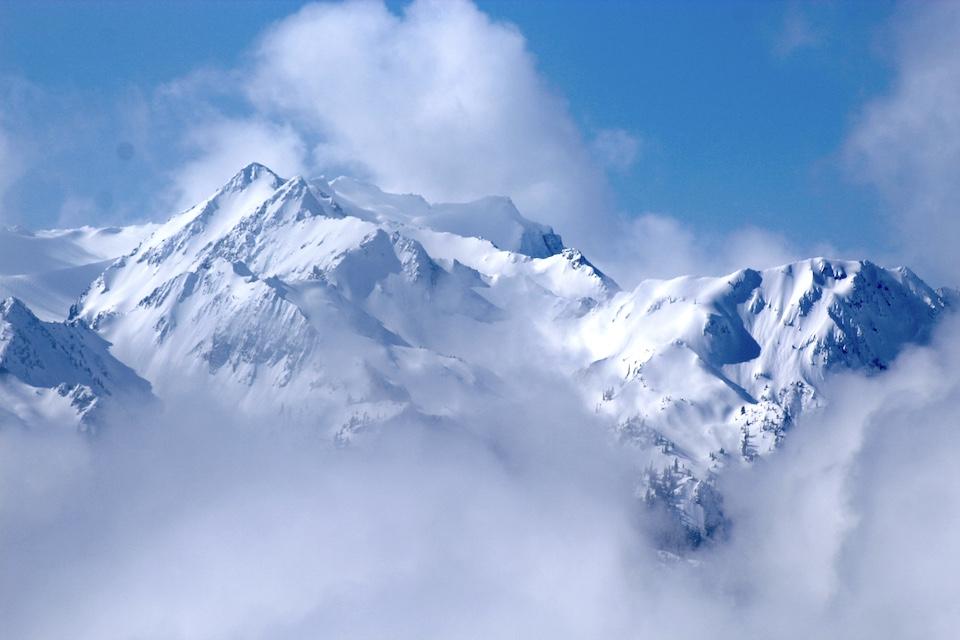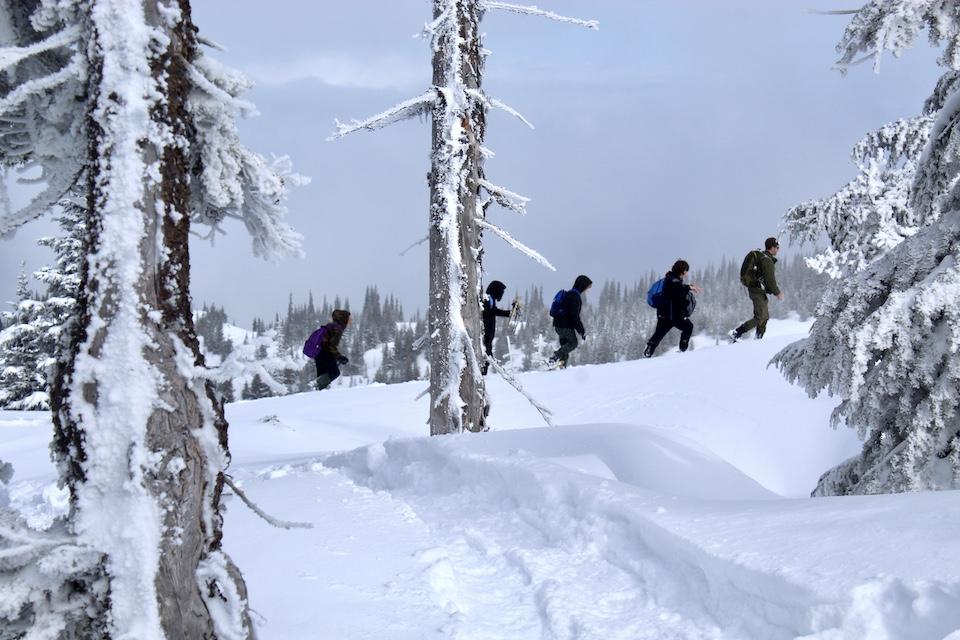
Hurricane Ridge in Olympic National Park is an ideal location for a middle school science program/John Meyer
By John Meyer, Washington’s National Park Fund, Board of Directors
“BIRD!,” exclaims a 13-year old boy, his voice full of enthusiasm. Standing high up on Hurricane Ridge in Olympic National Park, his job was to keep an eye out for any feathered friends passing overhead. The bird he saw was an ordinary gray jay — a common campground bird with a keen eye for store-bought snacks — but the excitement and seriousness with which he reported the sighting was palpable.
That same excitement and seriousness was evident in the three girls who measured the snowpack, and another boy whose furrowed brow expressed deep thinking when asked by the ranger: “What organisms might be affected in a low-water year in the Elwha River?” All were part of a unique science-based field experience offered by Olympic National Park and Stevens Middle School to every 7th grader in Port Angeles. That amounts to about 270 kids per year.
“This opportunity gives students a sense of ownership of our public lands,” says Park Ranger Jared Low. “It helps them see that this is their national park, it’s in their backyard, and ultimately helps create stewards of this land for the future.”

Park rangers work with the middle schoolers to help them under the science of ecosystems and climate change/John Meyer
The program is geared toward science learning and centers around the question: “How is changing snowpack, due to climate change, going to affect park ecosystems and surrounding communities?” Students help rangers, teachers and scientists collect data at Hurricane Ridge —5,000 feet above sea-level — to help answer that question, taking their measurements back to the classroom to add to other data that has been collected over the years.
“They get to come up here and see that what they are learning in the classroom is real,” says Susan Dekreon, science chair and teacher at Stevens Middle School. “It brings home the reality of what’s happening in a low-water year.” The students are keenly aware that Port Angeles drinking water comes from the Elwha River, and snowpack on the ridge directly impacts the water that’s available. Coming up to Hurricane Ridge lets them see that connection firsthand.

And it’s not all climate focused. They listen to native stories, learn to spot avalanche danger, identify animal tracks in the snow, go on a ranger-led snowshoe outing and talk about glaciers. They get to be nature-detectives for the day. “These kids get to interact with their teachers in a different way up here, and get to engage hands-on with the curriculum,” says Olympic National Park Public Affairs Officer Penny Wagner.
Beyond the chance to engage in immersive science, the day serves another purpose. About 60% of Port Angeles students come from low-income households, and have never been to Hurricane Ridge even though it is essentially in their backyard. This program — supported in part by Washington’s National Park Fund — makes sure kids have the transportation, boots, snowshoes, mittens, hats and lunches to spend the day in the park. For some students, the experience is life-changing.
“A kid last year looked at me during our day,” says Dekreon, “and told me: ‘This is what I want my career to be; I want to be a park ranger.’ I told him to keep aiming high and he could do it.”



Comments
The Port Angeles Education Foundation is proud to provide funding for this program. www.PA-EF.org
I am so grateful to get to share some Klallam stories with all of the student.